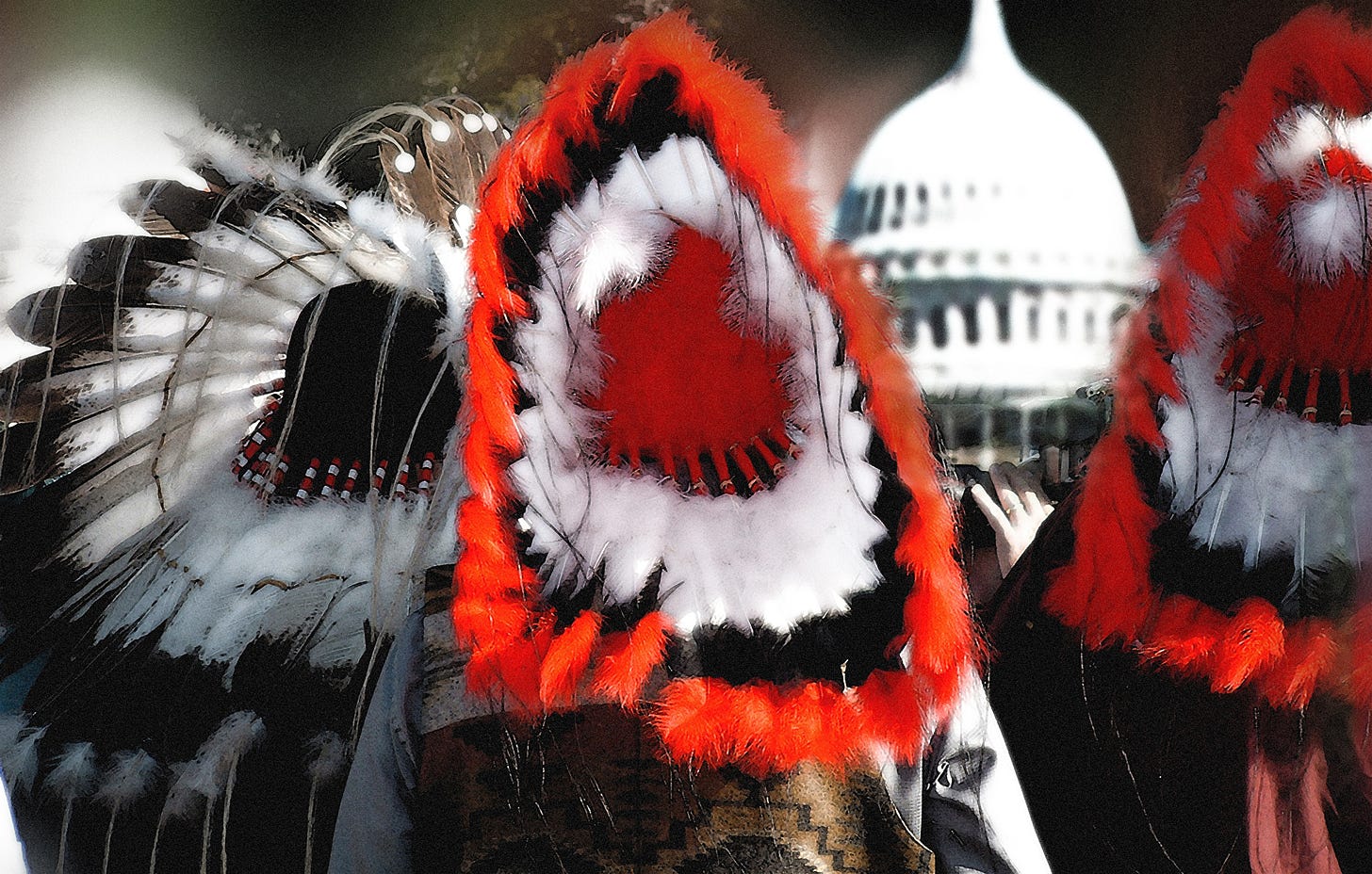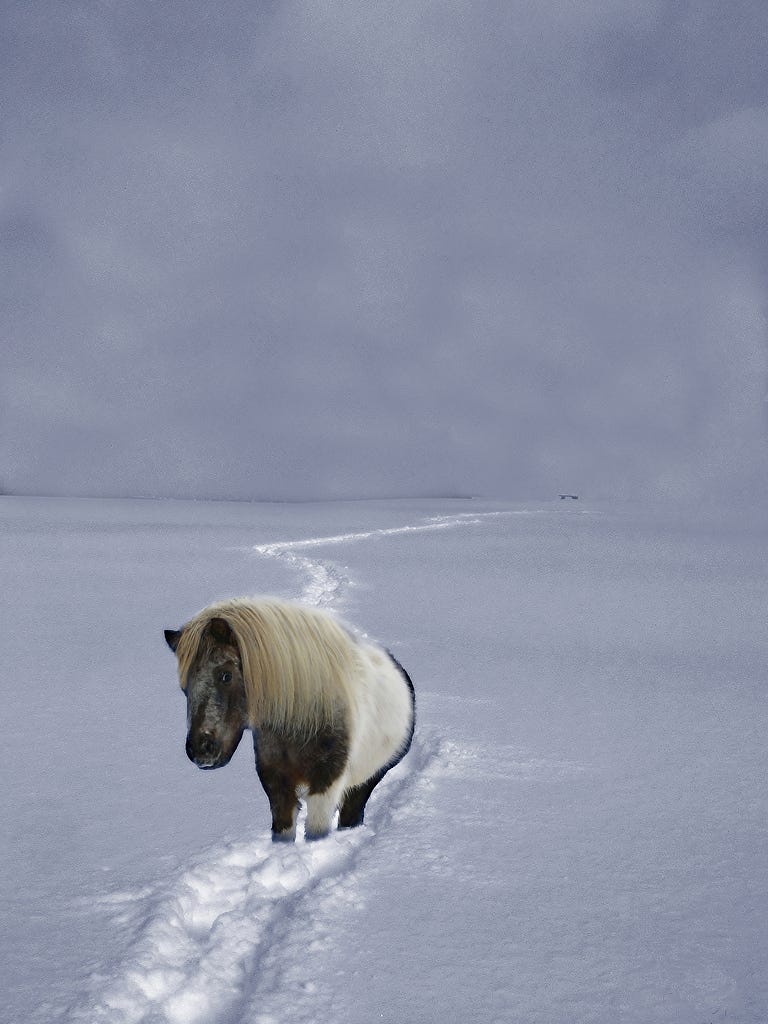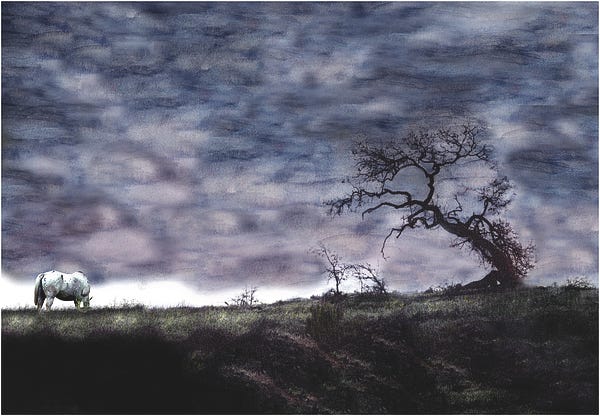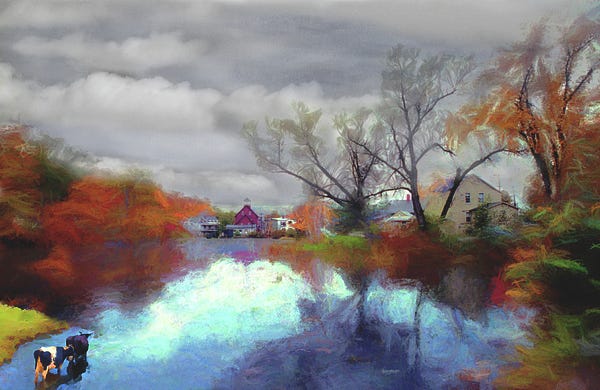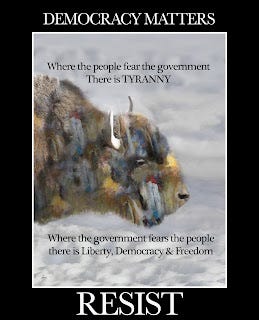Saving the Smithsonian
Founding Director, Smithsonian Museum of the American Indian, W. Richard West Jr. has one-word for efforts to shackle the Smithsonian – RESIST
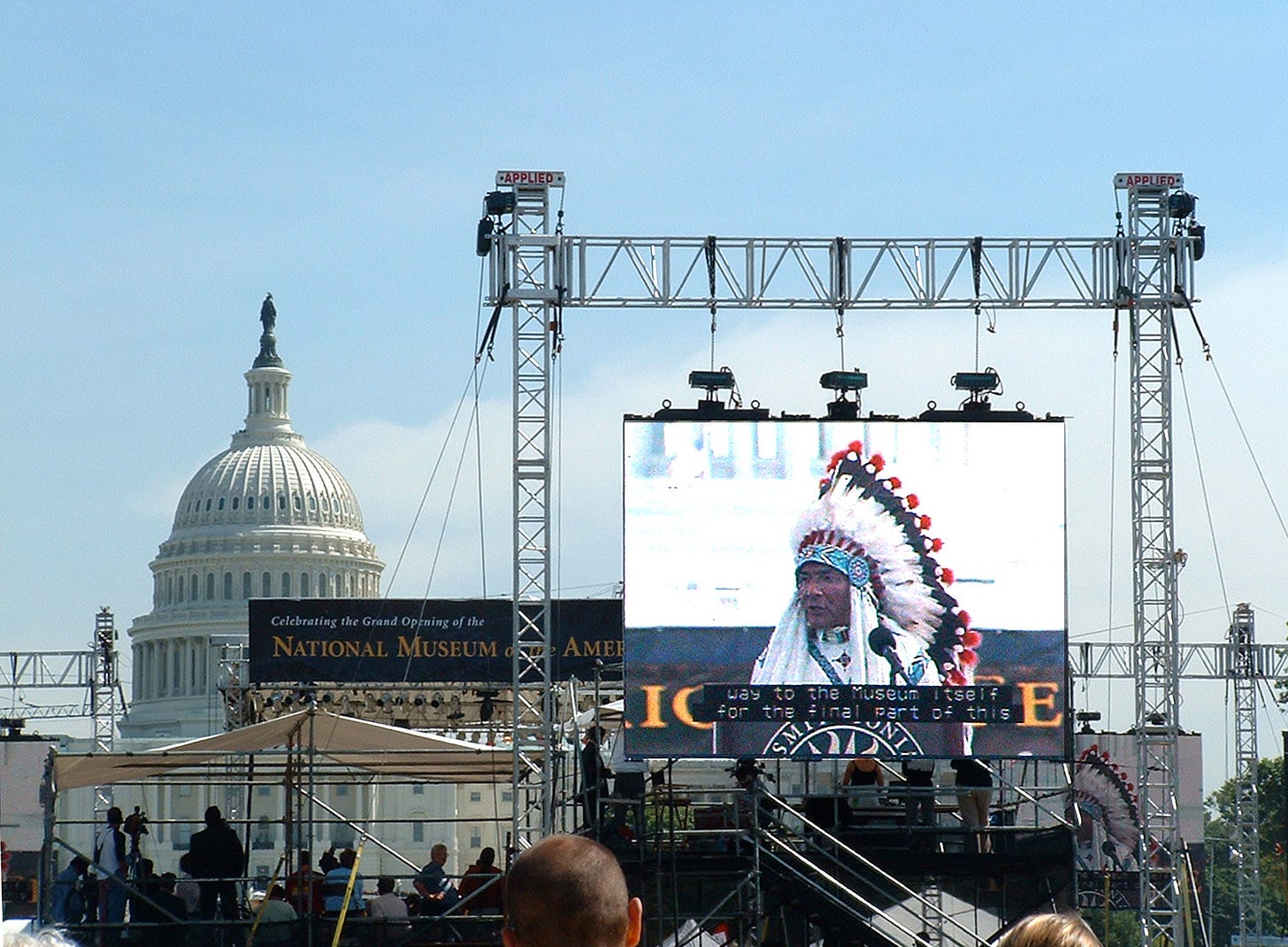
Wayne King presents an extended podcast interview with Founding Director W. Richard West Jr.
W. Richard West Jr.. is the Founding Director of the Smithsonian Museum of the American Indian and a Director Emeritus.
Rick is a citizen of the Cheyenne and Arapaho Tribes and a member of the Society of Southern Cheyenne Peace Chiefs, first among equals within the tribal societies among the Cheyenne and central to the governing of the nation on the Council of 44. Where he follows on the paths trod by the great Black Kettle, Dull Knife (aka Morning Star), Lean Bear, Little Wolf and Porcupine, among many others.
“Our Time Comes” - Opening Ceremony NMAI - Image by Wayne King
Signed Originals 16”X24” 8.5” x 12” Open Edition Prints
Richard West was appointed to be the founding director of the National Museum of the American Indian in 1990. He was formally named to the position on May 21, 1990.
When President Trump, in March 2025, issued an Executive Order stating that his administration would be conducting a wide-ranging review of the Smithsonian Institution to align its exhibits with the President’s cultural directives, there was very broad criticism of this as an effort to hobble the freedom of expression among museums that allowed them to present a truthful account of history.
Trump has publicly criticized the museums for focusing too heavily on what he calls “divisive narratives” and “woke” ideology, particularly regarding American history and slavery.
Now more than 15 years after West’s retirement from NMAI and more than a decade at the helm of the Autry Museum, Rick - has earned a national reputation for reinvigorating what it means to be a museum.
By building two important museums with a new philosophical approach. His vision brought together the Native American Community and other interests to create a harmonious opportunity for all voices to come together in celebration of the living community that is the American Indian Family within the tapestry of the American Family as a whole. Rick joins us in the accompanying podcast to add his wise and powerful voice to the debate.
Now, I’m going to jump around a bit to give you an overview of his remarkable life because, though each piece is important in its own right, together they have defined a route through time and destiny that doesn’t conform to any conventional timeline.
West grew up in Muskogee, Oklahoma, though he was born in San Bernardino, California, the son of American Indian master artist, the late Walter Richard West Sr. (Cheyenne name: Wah Pah Nah Yah) and Maribelle McCrea West.
He earned a bachelor’s degree in American history - magna cum laude
in 1965, graduating Phi Beta Kappa from the University of Redlands in California.
He received a master’s degree in American history from Harvard University in 1968, after which he transferred to Stanford School of Law, from which he received his JD in 1971. He was the recipient of the Hilmer Oehlmann Jr. Prize for excellence in legal writing and served as an editor of the Stanford Law Review.
West practiced law at the Indian-owned, Albuquerque, New Mexico, law firm of Gover, Stetson, Williams & West, P.C. (1988-1990). He was also an associate attorney and then partner in the Washington, D.C., office of Fried, Frank, Harris, Shriver & Jacobson (1973-1988). He served as counsel to numerous American Indian tribes, communities, and organizations. In that capacity, he represented clients before federal, state and tribal courts, various executive departments of the federal government, and the Congress.
Richard West was appointed to be the founding director of the National Museum of the American Indian in 1990. He was formally named to the position on May 21, 1990.
Following his retirement from the Smithsonian, he was offered, and accepted, a role as CEO of the Autry Museum of the American West - A role that certainly challenged Rick to bust a lot of myths and lead him to be acclaimed as a leader who “helped shift the love-hate dynamic between Indigenous people and museums.”
Though he is modest about this, sharing the credit among his colleagues, Rich was a major force at both the Smithsonian and Autry for steering the mission of the modern museum to a space of collaboration, education, community building and mutual understanding.
Signed original image, click here Unsigned open-edition prints
Trumps Executive Order:
In March 2025, President Trump issued an Executive Order stating that his administration would conduct a wide-ranging review of the Smithsonian Institution to align its exhibits with the president’s cultural directives. Trump has publicly criticized the museums for focusing too heavily on what he calls “divisive narratives” and “woke” ideology, particularly regarding American history and slavery.
The intent of the Executive Order could not have been more obvious than the stated title of the order: “Restoring Truth and Sanity to American History”. Many asked, of course, “who’s Truth” . . . “whose sanity”?
Among other things, the order directs the review of federal sites dedicated to history, including the Smithsonian, to ensure they focus on “American greatness” and “unifying” narratives.
Trump has used his social media platform to accuse the Smithsonian of being “OUT OF CONTROL” and fixated on negative topics, specifically mentioning the history of slavery.
He argues that the museums should place more emphasis on American “success,” “brightness,” and the future.
In August 2025, the White House officially informed Smithsonian Secretary Lonnie Bunch of a forthcoming “comprehensive internal review” of eight of the institution’s 21 museums.
The review will involve scrutinizing current and planned exhibitions, including wall text, websites, and social media.
The Pony’s Trail Image by Wayne King
Signed Originals Unsigned Open Edition Prints
The White House stated that museums would be required to adjust any content deemed “problematic” within 120 days and anticipates that the review process will be completed by 2026.
The response from both the museum community, the media, and the public has been heartening,
Historians, former Smithsonian staff, and museum associations have criticized the administration’s actions as a form of censorship and a politically motivated attempt to rewrite history.
A Quinnipiac University poll released in September 2025 indicated that 60% of voters opposed the Trump administration’s review of the Smithsonian.
The American Alliance of Museums described the proposed oversight as a threat to “freedom of thought and expression” and emphasized the importance of institutional independence.
The Smithsonian has publicly maintained its independence and commitment to “scholarly excellence” and “accurate, factual presentation of history”.
In September 2025, Secretary Lonnie Bunch responded to the White House by reiterating the Smithsonian’s authority over its own programming. He stated that the institution would conduct its own review and provide an update to the White House, but would not send a formal report.
But as we all know, the Trump administration employs many “extra-judicial” (read illegal) means to get its way, particularly related to funding.
Much of the turmoil can be traced to the more recent development of what are known as “Culturally-Specific museums”, developed especially to emphasize both the unity of the broad American vision and the sometimes-painful truths that have brought us to where we are today , . . and one step closer to reconciliation.
They represent both the joy and the pain of bending the “moral arc of the universe toward justice”, particularly for marginalized communities, as Rick West points out in this Podcast interview.
No one has played a more pivotal role in redefining the role of the modern museum than W. Richard West Jr, who has used his heritage and the wisdom of a life, with feet planted in both worlds, to hone a philosophy that sees museums as a source of both cultural pride and a crucible for developing intercultural understanding and empathy. A place where we can all learn to walk in one another’s “mocasins”.
In other words, while historically focused on celebrating a group’s unique history, modern conversations challenge these museums to also highlight shared experiences and universal connections.
Incidentally, in keeping with the theme song of this Radical Centrist podcast, “Tell Me Why,” where Reggae musician Free Joseph proclaims: “We’ve got to learn to live together.” Rick West has made his North Star helping us learn to live together.
Apple Podcast
Youtube:
Why we need to Resist (Abbreviated from original Podcast)
Signed originals Unsigned open-edition
About Wayne King
Wayne is a North American “mutt” with a family heritage that winds through his Native American, Canadian and US Colonial roots. His love for the philosophical founding documents and sacred stories and dreams of both the Abenaki and the Iroquois, the US Founders, and the sacred artists, musicans, writers and poets whose works and images are a celebration of the circle of life continue to be the source of his inspiration.
An author, podcaster, artist, activist, and recovering politician, including three terms as a State Senator and 1994 Democratic nominee for Governor. His art (WayneDKing.com) is exhibited nationally in galleries and he has published five books of his images, most recently, “New Hampshire - a Love Story”. His novel “Sacred Trust” - a vicarious, high-voltage adventure to stop a private power line - as well as the photographic books are available at most local bookstores or on Amazon.
Wayne lives on the “Narrows” in Bath, NH at the confluence of the Connecticut and Ammonoosuc Rivers and proudly flies the American, Iroquois and Abenaki Flags, attesting to both his ancestry and his spiritual ties. Anamaki is a derivative of an Algonquin word meaning “abiding hope”.
Art, Columns, and Podcasts are produced at Anamaki Productions, Winter Warrior Studios in Bath, NH. Join the mailing list and be first to see new images and to receive special offers on cards, prints, limited editions and more at his Anamaki Chronicles Substack
From the Gallery
Painted Sky Over Squam River Confluence


